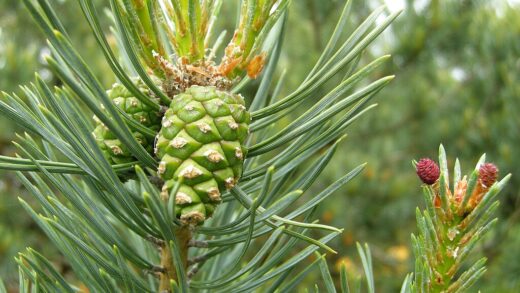Celery, scientifically known as Apium graveolens, is a nutrient-rich and versatile vegetable whose successful cultivation depends on several environmental factors, with light being of paramount importance. Light is not just an energy source for the plant but also a fundamental regulator of its physiological processes, growth, and development. Ensuring the right amount and quality of light is essential for establishing a robust, healthy crop and achieving a bountiful, high-quality harvest. Understanding and consciously managing these factors is a cornerstone of cultivation technology, distinguishing the successful gardener from one who merely tries.
Photosynthesis, the biochemical process by which the plant converts light energy into chemical energy, is the engine of celery’s development. During this process, chlorophyll in the leaves absorbs sunlight, particularly in the red and blue wavelength ranges, to synthesize sugars (glucose) from water and atmospheric carbon dioxide. These sugars provide the energy for all the plant’s vital functions, from cell growth and nutrient uptake to disease resistance. The efficiency of photosynthesis is directly related to the intensity of incoming light, so low-light conditions result in weaker growth and lower yields.
For celery, the length of daily illumination, or the photoperiod, also plays a critical role. Celery is a so-called long-day plant, meaning that illumination exceeding 12-14 hours can stimulate its transition into the generative phase, i.e., bolting (premature seed stalk formation). Since celery is grown for its vegetative parts—its root or leaf petioles—early flowering is undesirable because the plant diverts its energy to flower and seed production instead of developing its fleshy parts. Therefore, the timing of cultivation and choice of variety must take into account the natural day length determined by the geographical location.
Light not only regulates photosynthesis and flowering but also determines the plant’s shape and structure, a phenomenon called photomorphogenesis. The quality of light, meaning the ratio of different wavelengths, influences germination, stem elongation, leaf area expansion, and the development of storage organs (the celeriac root). Photoreceptors like phytochromes and cryptochromes sense the ambient light conditions and trigger hormonal responses that adapt the plant’s morphology for optimal light utilization. For example, in the absence of sufficient light, the plant elongates and becomes etiolated to reach better light conditions, which, however, compromises its quality.
The role of light in the physiological processes of celery
Optimal celery development requires a significant amount of direct sunlight, ideally 6-8 hours of full sun per day. Light intensity can be measured by Photosynthetic Photon Flux Density (PPFD), with units of micromoles per square meter per second (μmol/m2/s). Although celery is a light-loving plant, excessively strong sunlight, especially when combined with high UV radiation and temperature, can cause stress, leading to leaf scorch and stomatal closure, which limits gas exchange and photosynthesis.
More articles on this topic
Not only the quantity but also the quality of light, its spectral composition, is crucial. Blue light (400-500 nm) promotes compact, stocky growth, the development of thicker leaves, and high chlorophyll concentration, which is essential for raising strong, healthy seedlings. Red light (600-700 nm) primarily influences stem elongation and the induction of flowering. In modern, controlled-environment agriculture (e.g., greenhouses or vertical farms), LED lights allow the spectral composition of light to be tailored to the plant’s needs, thereby maximizing yield and quality.
In field cultivation, selecting the right location is fundamental. A site should be chosen that receives direct sunlight for the longest possible duration during the day and where surrounding trees, buildings, or other plants do not shade the celery crop. Incorrect plant spacing can also cause problems, as plants that are too close together will shade each other, competing for light. This competition leads to uneven development, thinner petioles, and smaller roots, significantly reducing the quantity and uniformity of the harvestable crop.
The use of supplemental lighting can be particularly justified during the seedling stage, especially in the low-light months of early spring. Artificial light sources, such as High-Pressure Sodium (HPS) lamps or more modern, full-spectrum LED panels, can provide the necessary quantity and quality of light for young plants. This prevents seedlings from becoming leggy and helps grow vigorous, well-developed individuals that are more tolerant of transplant shock. Under controlled conditions, precise control of light conditions allows for shortening the cultivation cycle and increasing crop security.
Physiological effects of light deficiency and excessive light
Inadequate illumination, especially prolonged light deficiency, produces characteristic symptoms in celery. The most obvious phenomenon is etiolation, where the plant stretches towards the light, causing stems to become thin, weak, and brittle. The leaves turn a pale green or yellowish color (chlorosis) because light is essential for chlorophyll synthesis. All of this significantly reduces the plant’s photosynthetic capacity, leading to slowed or completely halted growth.
More articles on this topic
Light deficiency also has serious biochemical consequences. Due to reduced photosynthesis, the plant cannot produce enough carbohydrates, leading to an energy deficit throughout the organism. This deficiency not only curtails the growth of vegetative parts (root, petiole) but also inhibits the development of the root system, further impairing water and nutrient uptake. The weakened plant becomes more susceptible to attacks from pathogens, such as fungal diseases, and pests, as it lacks sufficient energy to operate effective defense mechanisms.
However, excessive light energy can also be harmful, especially if it exceeds the plant’s processing capacity. This phenomenon is photoinhibition, where damage occurs to the photosynthetic apparatus, particularly Photosystem II, due to excess energy. Symptoms include leaf bleaching, yellowing, or even scorching (sunscald), which reduces the effective leaf area. As a defense, the plant may close its stomata to reduce transpiration, but this also hinders carbon dioxide uptake, further worsening the photosynthetic balance.
For growers, there are strategies to mitigate these extreme effects. In case of light deficiency, the solution is better site selection, keeping the area weed-free, and setting the correct plant spacing; in more severe cases, supplemental lighting can be used. An effective way to protect against stress from excessive sunlight is to use shade cloths during the hottest summer periods. These cloths reduce the intensity of incoming light and the temperature, protecting plants from scorching and water stress while allowing enough light for normal development.
Cultivation technology and the optimization of light conditions
The success of celery cultivation begins at sowing, where light plays a crucial role. Celery seeds are tiny and require light for germination, meaning they are photoblastic. For this reason, the seeds should not be sown deep; it is sufficient to sprinkle them on the soil surface and cover them with only a very thin layer of finely crumbled soil or vermiculite. Ensuring proper light conditions at this early stage is essential for establishing a high germination rate and the development of healthy, vigorous seedlings.
An interesting cultivation technique is blanching, a deliberate light deprivation method used for stalk celery. A few weeks before harvest, the celery stalks are shielded from light, for example, by mounding soil around them or wrapping them with cardboard or special collars. In the absence of light, chlorophyll production in the stalks ceases, resulting in paler, whiter, more tender, and less bitter stalks. This practice is a perfect example of how manipulating light conditions can directly influence the quality characteristics of the final product to meet consumer preferences.
Choosing the optimal plant and row spacing is also part of effective light management. Proper spacing ensures that each plant receives enough sunlight without significant shading from neighboring plants. This results in more uniform crop development, thicker, fleshier stalks (stalk celery), and larger, well-shaped roots (celeriac). By also ensuring adequate airflow, the humidity between plants is reduced, which lessens the risk of fungal diseases, thus indirectly contributing to a healthier crop.
In the future of celery cultivation, precision technologies will play an increasingly important role in optimizing light conditions. Drones equipped with sensors and stationary monitoring stations can monitor light intensity and crop health in real-time. Based on this data, dynamic LED lighting systems in modern greenhouses and vertical farms can automatically adjust the light spectrum and intensity according to the plant’s growth stage or even the time of day. This technology not only maximizes yield and quality but also optimizes energy use, pointing towards a more sustainable and efficient vegetable production.


















